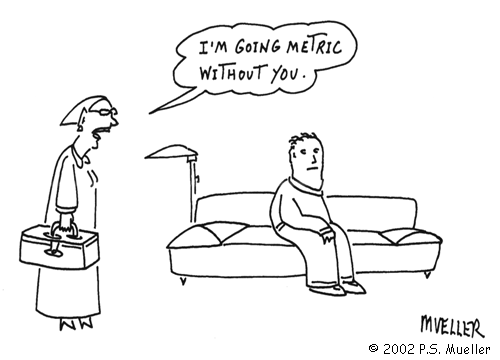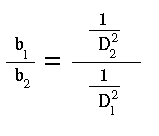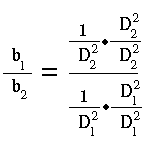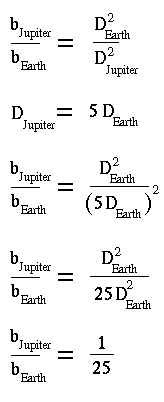

A typical example is to consider the relationship between light and distance give by the equation:

This reads as `brightness is proportional to the inverse of the distance squared'. Which we rewrite using the variable 'b' for brightness and 'D' for distance, such that:

Now when we compare two numbers, say the brightness of object 1 and the brightness of object 2 (which have distances, D1 and D2), then a proportionality means that we can divide the two equations by each other to give:

This equation can be manipulated in the following manner:

Where multiplying by D1 over D1 and D2 over D2 is the same as multiplying by 1. This results in

Notice that the D1 term is now demonminator and the D2 term in is the numminator. With this form of the inverse distance law, one can plug in a value for the distance of the Sun to Jupiter in terms of the Earth's distance (i.e. DJupiter is 5 times DEarth) so that the formula becomes
